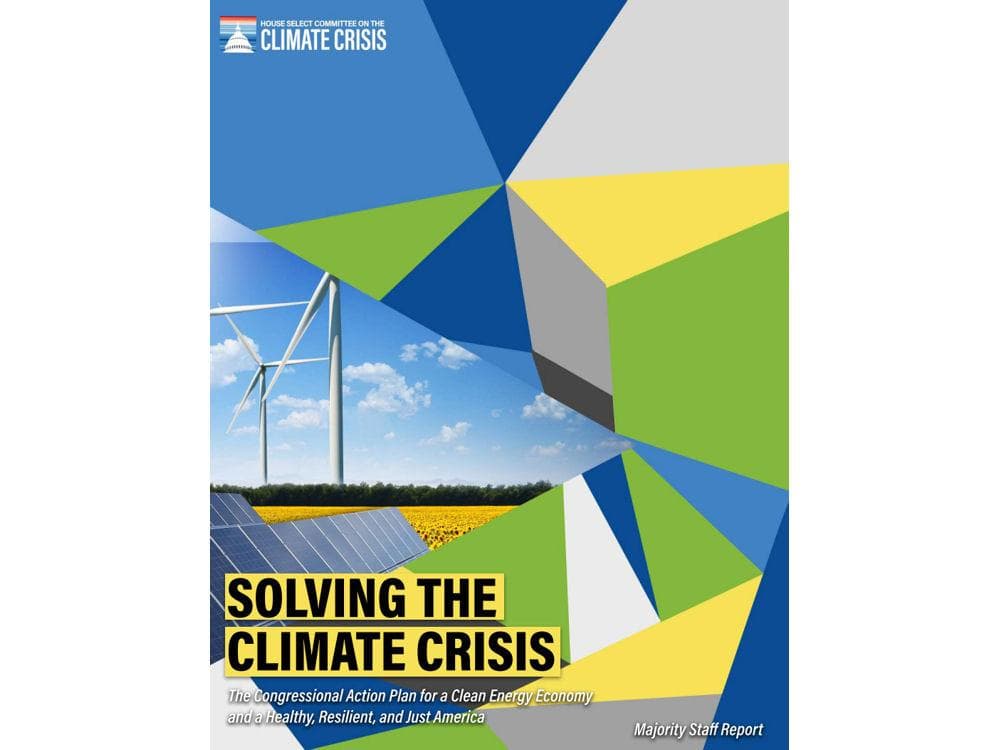The US House of Representatives Select Committee on the Climate Crisis has released Solving the Climate Crisis, The Congressional Action Plan for a Clean Energy Economy and a Healthy, Resilient, and Just America, a majority staff report prepared by the majority committee staff. The Committee is composed exclusively of Democrat US representatives. The Committee refers to the document as a “Congressional Action Plan”, though it has not been adopted by the full House of Representatives, nor is there any corresponding plan which has been developed by a select committee in the US Senate and adopted by the full US Senate.
The Executive Summary of the action plan states that: “With the devastating health and economic consequences of climate change growing at home and abroad, the United States must act urgently, guided by science, and in concert with the international community to provide a livable climate for today’s youth and future generations.” Beyond this reference to the international community, the action plan is exclusively focused on actions limited to the US and discusses no requirements for parallel actions on the part of the rest of the nations of the globe.
The action plan bears a striking resemblance to “A Green Stimulus to Rebuild Our Economy”. , which builds upon both the Green New Deal developed by the Green Party in the US and the Blue New Deal developed by the New Economics Foundation in the UK. These proposals are discussed here and here. None of these documents acknowledge that the United States is not capable of “solving the climate crisis” in the absence of equally Draconian actions on the part of all the other nations of the globe, even assuming that such global concerted actions would be capable of “solving the climate crisis”.
The need for development of the action plan is based on the assertion, without any evidence, that: “the devastating health and economic consequences of climate change (are) growing at home and abroad”. These consequences are not identified, except by reference to the following summary comments from the US Fourth National Climate Assessment.
“High temperature extremes and heavy precipitation events are increasing. Glaciers and snow cover are shrinking, and sea ice is retreating. Seas are warming, rising, and becoming more acidic, and marine species are moving to new locations toward cooler waters. Flooding is becoming more frequent along the U.S. coastline. Growing seasons are lengthening, and wildfires are increasing. These and many other changes are clear signs of a warming world.”
The deception summarized in the paragraph above has been documented by Tony Heller in a series of YouTube videos, of which this is the most damning. The contributors to the Assessment “cherry-picked” the start dates in their graphical presentations to present the data beginning with the lowest point in the data for each issue they addressed, rather than showing all of the data from the beginning of the data record.
Climate change is not causing extreme weather, as suggested in the Fourth National climate Assessment, as discussed here. Arguably, the effects of the mild global warming to date and the increased atmospheric CO2 concentrations have been a net benefit to society globally and will continue to be so for the foreseeable future.
The “climate crisis” is a construct of unverified and unrepresentative climate models, which are a wholly inadequate basis for global or national policy development.
